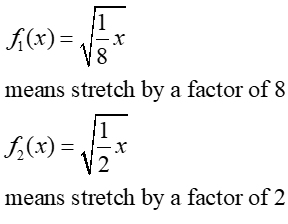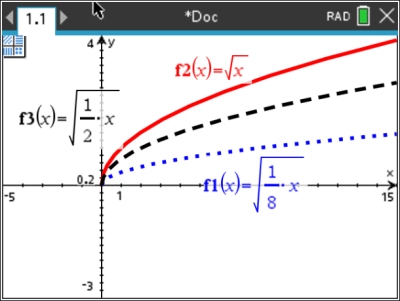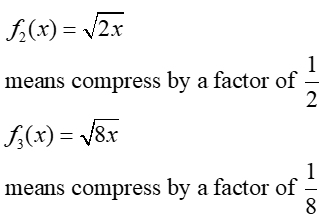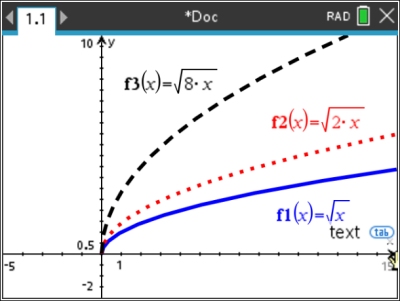Transformations as they apply to Square Roots
Let's refresh what we know about transformations, and how they apply to square roots.
 With the exception of the last chart section on "horizontal stretch" and "horizontal compression",
With the exception of the last chart section on "horizontal stretch" and "horizontal compression",
these basic transformations were studied (and can be reviewed) in Algebra 1.
While these examples list only square roots, these transformations also apply to cube roots, and other radical functions.

The generic graphical formulas for square roots and cube roots,
that emphasize transformations, are:
Square root:
 |
Cube root:
 |

Let's start by examining a reflection over the y-axis,
because at first glance,
that square root formula looks really confusing! A negative under the square root?
The clue to what is happening is in examining what happens as we move along the x-axis.
| x |
-16 |
-9 |
-4 |
-1 |
0 |
1 |
4 |
9 |
16 |
 |
4 |
3 |
2 |
1 |
0 |
not
real |
not
real
|
not
real |
not
real |
| Graph |
(-16,4) |
(-9,3) |
(-4.2) |
(-1,1) |
(0,0) |
None |
None |
None |
None |
As long as the domain stays negative (or zero), there is no problem.
We have real numbers that can be graphed.
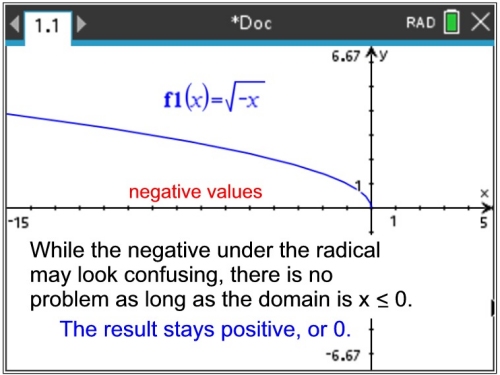
The end behavior for this graph is
as x → 0-, f (x)
→ 0 (comes from the left) and
as x → -∞, f (x)
→ +∞

The last section of the chart, at the top of this page, was most likely not covered in Algebra 1.
Therefore, a lesson has been devoted to "Horizontal Stretch or Compress".
If you have not seen this transformation in action, please take a look before continuing.
 Horizontal Stretch (f (k•x) where 0 < k < 1)
Horizontal Stretch (f (k•x) where 0 < k < 1)
A horizontal stretch "pulls" the graph horizontally away from the y-axis
(to the left and/or right).
 Horizontal Compression (f (k•x) where k > 1)
Horizontal Compression (f (k•x) where k > 1)
A horizontal compression "pushes" the graph horizontally closer to the y-axis
(to the left and/or right).
|
For
calculator help with graphing
radical functions.
click here. |
|
|




